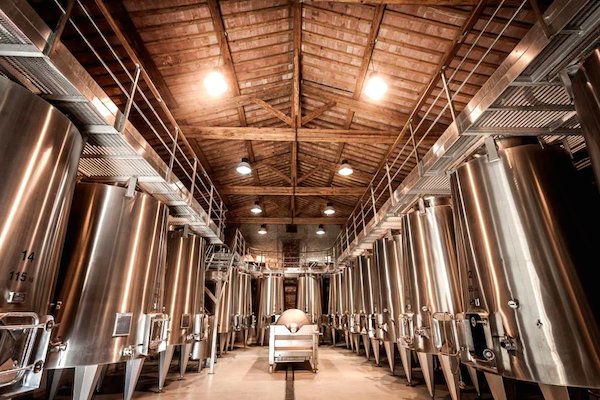‘Oh to be a tourist, rather than a grape!' This sums up our Minervois summer of 2016. Normally, one would be delighted to have warm, dry summer days, notably in August (le mois d’août qui fait le moût, or ‘August makes the juice’, as they say). The weather hiccup in the ointment was that not only was summer dry, but winter was short of rain too.
We normally receive two-thirds of the year’s rain over the winter months, with the balance coming in intermittent showers during summer, often in short, sharp bursts of rain (not unusual in semi-arid climes). We had neither of these seasonal rains in sufficient quantities. Winter rain for us was 235 mm (some 9 inches) from October 2015 to the end of March 2016 - versus a historical norm of 400-450 mm (16-17 inches). And only 38 mm (1.5 inches) fell during the June–September period. Even weeds were complaining. May had been temporarily kind with 80 mm of rain, but by then precipitation was evaporating faster than it would in the winter and early spring thanks to the warmer weather and dry north winds, so not replenishing water tables.
Overall, for the vigneron year (October 2015 – September 2016), precipitation was 370 mm (14.5 inches), versus an average of 600-650 mm (c 25 inches). Irrigation (the New World response) was not the answer – we can’t under AOP rules. Older vines, with deeper roots, found humidity deep down in the soil. Their younger cousins suffered most. And all this came after a normal 2015 (625 mm), but a dry 2014 (420 mm).
It’s perhaps boring to hammer home this point, but without sufficient rain, vines cleverly adapt to the conditions, seeking their longer-term survival rather than providing succour to their annual offspring. Grapes are therefore deprived of sustenance, stay small and have less juice.
The 2016 harvest started at the beginning of September, with Grenache and Mourvèdre for the rosé, followed by the Viognier and Vermentino for the white. Volumes were not as dire as feared for these white varieties, down ‘only’ 20%, being picked earlier than their red cousins.
The red wine grapes came in late September/early October – and were witness to the stress of one month’s additional drought. We estimate that red volumes were down some 40%, with the Syrah in particular displaying small berries, a cost we were obliged to suffer while waiting for phenolic maturity. The Mourvèdre and Carignan came in last, having suffered less than the Syrah and Grenache; but then these varieties resist semi-arid conditions better. The Carignan displayed a notable improvement in quality versus earlier years (perhaps due to its Spanish origins?), a masochistic varietal if ever there was one.
I should stress that our experience cannot be held true for all the Minervois, let alone the Languedoc. For example, just 25 km to the north east, in Minervois La Livinière, the gods were generous, giving them 40-50 mm of rain two weeks before harvest! No significant harvest loss there. But most of the Minervois and the neighbouring Corbières and Fitou have seen yields down by between 25 and 40%, compared with minus 12% for France overall. Négociants are scouring for juice!

Once the grapes were finally harvested, cellar work has been relatively easy. Fruit was exceptionally clean and healthy after the warm dry months, but it had suffered some blockage on the way to final maturity. We calculate final yields (ex skins, etc) as being exceptionally low – Syrah and Grenache at 21-22 hl/ha (versus a 35-40 norm for us), while the yields of the Mourvèdre and Carignan, better adapted to the conditions, dragged the overall yields for the reds up to some 26 hl/ha, under half the permitted maximum yield for Minervois of 54 hl/ha.
Délestage (rack and return) was practised across the board for the reds, permitting optimal extraction from the small berries. By contrast, little cold maceration was used, the lees depositing themselves easily following cool, early-morning harvesting. Fermentation progressed without incident and our last pressing was completed on 25 October. The red wines (85% of our production) are improving in tank and barrel, being very fruity on the nose and quite expressive and concentrated on the palate. The white and rosé are also progressing noticeably in tank.
So, a fantastic year for the tourist [as a neighbour of Graham’s throughout the summer, I can confirm this – JR], but a frustrating one for the vigneron, due to the diminished volumes and constant worry. The vines did, however, compensate with highly clean, concentrated and ripe fruit, pointing to a high-quality, albeit small vintage.
Looking forward, if 2016/17 rainfall is also insufficient to replenish water tables and allow the vines to recuperate, we could be confronted with issues of plant health and yet lower yields. However, up to early November 2016, rainfall has accelerated, which, if it continues through winter, may obviate the need to sacrifice those goats in 2017!














